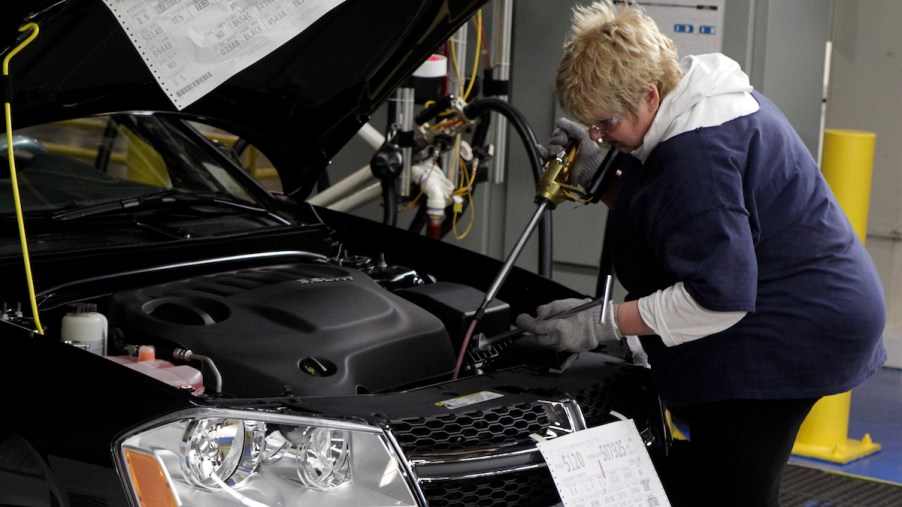
How to Clean up Transmission Fluid Leaks
Neglecting maintenance for your car can cause expensive repairs (and even a premature vehicle replacement) down the road. For example, take your car’s engine. Without high-quality oil and the right spark plugs, it will have performance issues until it eventually overworks itself to failure.
Both require transmission fluid, whether your vehicle has an automatic or manual gearbox. This usually needs to be refilled every 60,000-100,000 miles, depending on your vehicle and transmission type. Every driver should also know what to do when there’s a transmission fluid leak.
How do you know if you have a transmission fluid leak?

According to Access Auto Insurance, leaking transmission fluid will usually pool underneath the middle of your car. Unlike liquids like antifreeze, transmission fluid is very thick and sticky in texture. You can surely tell if the leak is coming from the transmission by examining the color of the fluid.
Transmission fluid is usually brown or deep red color. These leaks are most common right after the transmission fluid has been changed. If you change your transmission fluid on your own, you need to follow each step correctly to avoid leaks.
This is a messy job, so we recommend wearing safety glasses and gloves before you begin. Find the transmission pan under your vehicle and put a collection pan underneath it. You can then remove the old transmission fluid by unscrewing the drain bolt on the transmission pan.
With the transmission bay drained, you can replace the cover and add new fluid. Pop open the hood of your car and locate the transmission fluid dipstick, usually right next to the oil dipstick. Take out the dipstick and pour in the new transmission fluid.
Since this process involves putting your car up on jack stands, many people might not feel safe attempting this maintenance task. In that case, it’s better to trust a mechanic. If your car leaks fluid after a professional service appointment, return to the auto shop as quickly as possible for a check-up.
How to clean up a transmission fluid leak
Transmission fluid is potentially flammable, so it’s essential to clean up leaks as soon as you spot them. Access Auto Insurance recommends letting the stain set for 15 minutes under a coating of oven cleaner. You should use a thick brush to thoroughly scrub the stain away, followed by a good rinse with a hose.
Potential causes of transmission fluid leakage
It’s possible that you or your mechanic could have failed to secure the transmission bay after a fluid change properly. You should also never overtighten the bolts when reattaching the screws into the transmission bay. This can cause the bolt heads to warp and break, allowing the fluid to leak past it.
Your car’s pan gasket is also prone to cracking due to old age or general wear and tear. When your transmission oil is changed, ask your mechanic to check the gasket pan and the transmission filter. That way, you can get what’s broken replaced and avoid cleaning up a mess later.
A crack in your car’s torque converter can also cause transmission fluid to leak. This component is responsible for circulating the fluid inside the transmission. If you have an automatic transmission, its fluid can escape through broken or melted seals.
One large rock or another piece of debris can also puncture your transmission bay and free the fluid inside. Even if debris doesn’t hit your transmission bay directly, sharp stones or sticks can also damage the transmission fluid line and torque converter.
The best way to avoid fluid transmission leaks is to have the car’s transmission components inspected whenever you change the fluid. If you notice transmission fluid under your car, don’t drive it until the cause of the leak is addressed.


